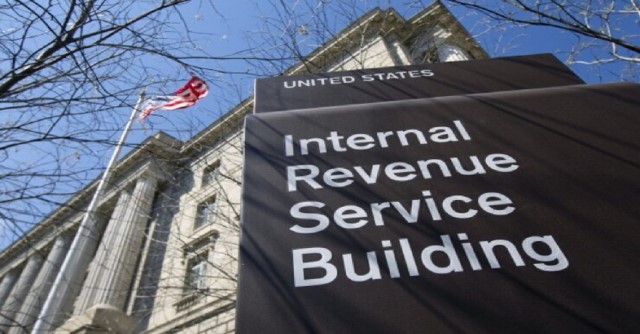UNITED STATES: Millions of taxpayers across the United States have been reminded of the upcoming tax filing extension deadline by the Internal Revenue Service (IRS). The IRS has urged those who requested an extension to file their 2022 tax return on or before Monday, Oct. 16, to avoid a possible late filing penalty.
Disaster-area taxpayers in most of California and in parts of Alabama and Georgia have also been granted extensions until Oct. 16, 2023, to file various federal individual and business tax returns and make tax payments. Taxpayers affected by flooding in Illinois and Alaska have until Oct. 31, 2023, to file, while those affected by flooding in Vermont have until Nov. 15, 2023, to file. Taxpayers impacted by recent natural disasters, including those affected by the recent Maui fires and hurricane Idalia in parts of Florida, South Carolina, and Georgia, have until Feb. 24, 2024, to file various individual and business tax returns.
The IRS Free File is available through Oct. 16 and lets qualified taxpayers prepare and file federal income tax returns online using guided tax preparation software. It’s available to any person or family with an adjusted gross income (AGI) of $73,000 or less in 2022. Taxpayers can use the IRS Free File to claim the Child Tax Credit, the Earned Income Tax Credit, and other important credits. IRS Free File Fillable Forms is available for taxpayers whose 2022 AGI was greater than $73,000 and who are comfortable preparing their own tax return.
Taxpayers can get answers to many tax law questions by using the IRS’s Interactive Tax Assistant tool. Additionally, taxpayers can view tax information in several languages by clicking on the “English” tab located on the IRS.gov home page. The IRS Online Account feature provides information to help taxpayers file an accurate return, including AGI amounts from last year’s return, estimated tax payment amounts, and refunds applied as a credit.
Taxpayers can file anytime and schedule their federal tax payments up to the Oct. 16 due date. They can pay online, by phone, or with their mobile device and the IRS2Go app. Electronic payment options are easy and flexible, and taxpayers can pay when they file electronically using online tax software. Those who use a tax preparer should ask the preparer to make the tax payment through an electronic funds withdrawal from a bank account. The IRS2Go mobile app provides access to mobile-friendly payment options, including Direct Pay and debit or credit card payments. Payments can also be made with a credit card, debit card, or a digital wallet option, available through a payment processor. The payment processor, not the IRS, charges a fee for this service. Convenient, safe, and easy, the Electronic Federal Tax Payment System (EFTPS) allows for payments online or by phone using the EFTPS Voice Response System. EFTPS payments must be scheduled by 8 p.m. ET at least one calendar day before the tax due date.
In conclusion, taxpayers are reminded to file their tax returns on or before the Oct. 16 deadline to avoid late filing penalties. Those affected by natural disasters or in certain states have been granted extensions until 2023 and 2024. The IRS Free File and other online resources are available to help taxpayers prepare and file their returns, while electronic payment options provide convenience and flexibility. Taxpayers are encouraged to visit the IRS website for the latest information and resources.
Taxpayers affected by disaster declarations and those returning from a combat zone may have additional time to file. They include:
- Taxpayers affected by flooding in Illinois and Alaska. They have until Oct. 31, 2023, to file.
- Those affected by flooding in Vermont. They have until Nov. 15, 2023, to file.
- Taxpayers affected by recent natural disasters including those impacted by the recent Maui fires and hurricane Idalia in parts of Florida, South Carolina, and Georgia. Those in the counties of Maui, Hawaii, and many counties in Florida, South Carolina, and Georgia have until Feb. 24, 2024, to file various individual and business tax returns. This list continues to be updated regularly. Taxpayers potentially affected by recent storms should visit the disaster relief page on IRS.gov for the latest information.
- Members of the military and others serving in a combat zone. They typically have 180 days after they leave the combat zone to file returns and pay any taxes due.
IRS Free File and other online resources
IRS Free File is available through Oct. 16 and lets qualified taxpayers prepare and file federal income tax returns online using guided tax preparation software. It’s available to any person or family with an adjusted gross income (AGI) of $73,000 or less in 2022. Taxpayers can use the IRS Free File to claim the Child Tax Credit, the Earned Income Tax Credit, and other important credits. IRS Free File Fillable Forms is available for taxpayers whose 2022 AGI was greater than $73,000 and who are comfortable preparing their own tax return.
Taxpayers can get answers to many tax law questions by using the IRS’s Interactive Tax Assistant tool. Additionally, taxpayers can view tax information in several languages by clicking on the “English” tab located on the IRS.gov home page.
The IRS Online Account feature provides information to help taxpayers file an accurate return including AGI amounts from last year’s return, estimated tax payment amounts, and refunds applied as a credit.
Schedule and pay electronically
Taxpayers can file anytime and schedule their federal tax payments up to the Oct. 16 due date. They can pay online, by phone or with their mobile device and the IRS2Go app. Some other key points to keep in mind when filing and paying federal taxes electronically include:
- Convenience. Electronic payment options are easy and flexible. Taxpayers can pay when they file electronically using online tax software. Those who use a tax preparer should ask the preparer to make the tax payment through an electronic funds withdrawal from a bank account.
- IRS Direct Pay. This feature allows taxpayers to pay online directly from a checking or savings account for free and schedule payments up to 365 days in advance. An IRS Online Account is needed, however, to use IRS Direct Pay.
- Pay by card. Payments can be made with a credit card, debit card, or a digital wallet option. These are available through a payment processor. The payment processor, not the IRS, charges a fee for this service.
- IRS2Go. The IRS2Go mobile app provides access to mobile-friendly payment options, including Direct Pay and debit or credit card payments.
- Electronic Federal Tax Payment System (EFTPS). Convenient, safe, and easy, EFTPS allows for payments online or by phone using the EFTPS Voice Response System. EFTPS payments must be scheduled by 8 p.m. ET at least one calendar day before the tax due date.


